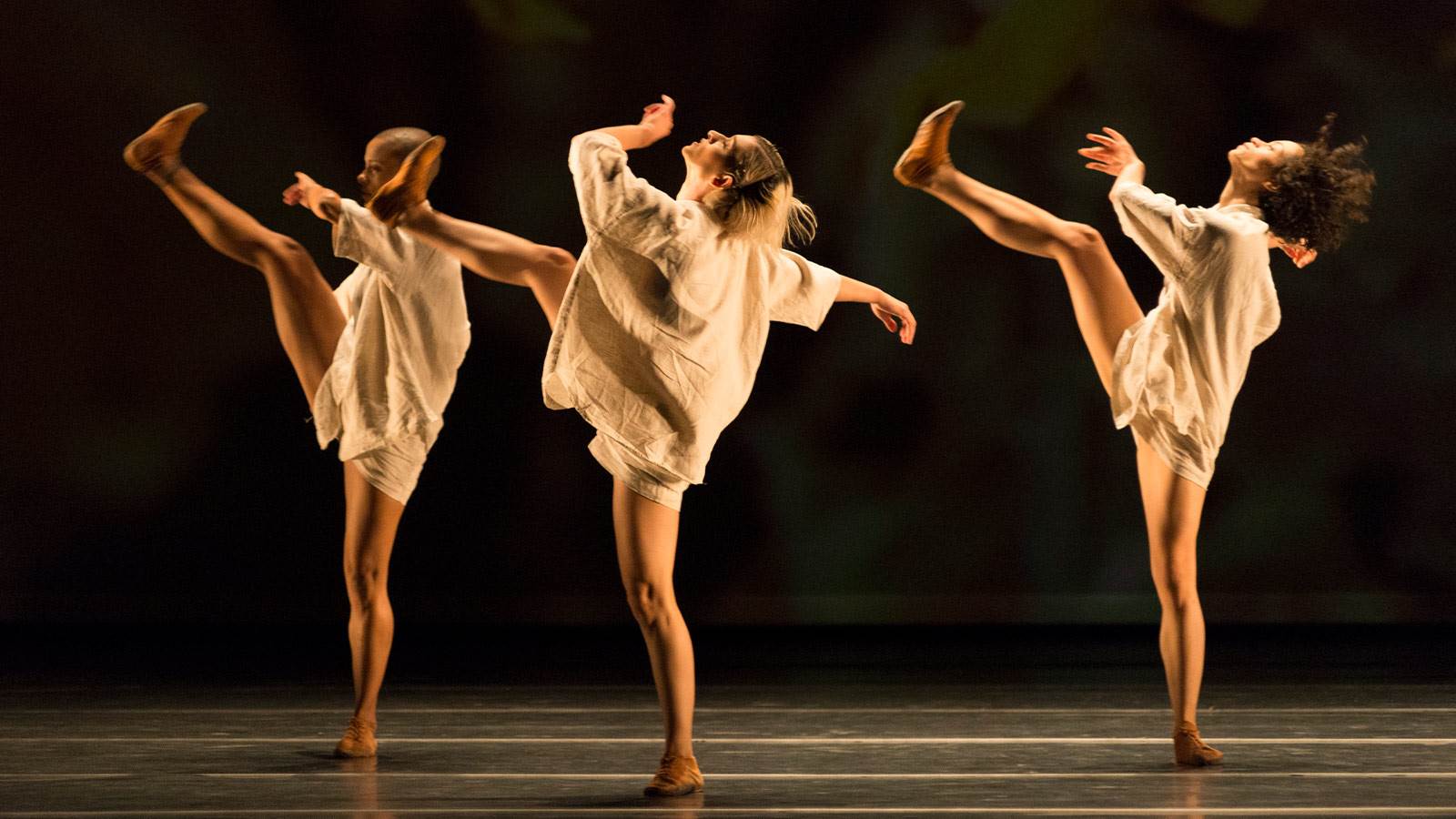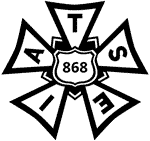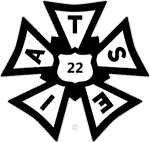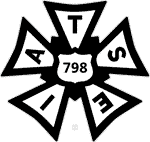Fri. Mar. 1, 2024 7:30p.m.
-
Fri. Mar. 1, 2024 7:30p.m.
-
Sat. Mar. 2, 2024 7:30p.m.

Grupo Corpo in Gil Refazendo; Photo by Jose Luiz Pederneiras
Opera House
-
Runtime
98m (1h, 38m) with 20m intermission
-
Presenting Sponsor
Program
GIL REFAZENDO
Choreographer: Rodrigo Pederneiras
Music: Gilberto Gil
Scenography and lighting: Paulo Pederneiras
Costumes: Freusa Zechmeister
The soundtrack, especially created by one of the godfathers of Brazilian music, Gilberto Gil, was first heard by Grupo Corpo’s Paulo and Rodrigo Pederneiras in 2019. Its first onstage interpretation – GIL – followed soon after. Three years later (including a lengthy interruption caused by the Covid-19 pandemic) the music is back on the stage in a new incarnation, and in a spirit of renewing, rebuilding, revising, reviving. Remaking. “It isn’t just new choreography: it's a new show,” says Grupo Corpo artistic director Paulo Pederneiras. That spirit is captured in the name: GIL REMAKING (Gil Refazendo). Like Gilberto Gil’s music, which is based on a reinterpretation of the Bahian songwriter’s most famous songs, known by heart throughout Brazil, the ballet has been reconstructed in its entirety.
GIRA
Choreography: Rodrigo Pederneiras
Music: Metá Metá
Set design: Paulo Pederneiras
Costume design: Freusa Zechmeister
Lighting design: Paulo Pederneiras and Gabriel Pederneiras
Gira
Noun, Brazilian Portuguese [From quimbundo njila, “spin”; from quicongonzila, “path”]
In Angola-Congo nations (types of Candomblé) and Umbanda gatherings, a congregation gets together to worship the deities (“spiritual beings”) of the terreiro (a site of worship in Candomblé) with chants and ritual dances (usually performed by spinning in circles).
Synonymous with jira, enjira, canjira, corruptions of Njila, Pambunzila, Bombojira, which are some of the names related to Eshu in Angola-Congo nations.
The rituals of Umbanda – the most worshiped of religions born in Brazil, and the result of the merger of Candomblé with Catholicism and Kardecism, and intangible heritage of Rio Janeiro since 2016 – are the great source of inspiration for the set aesthetics of the spectacle Gira, with choreography by Rodrigo Pederneiras, scenography by Paulo Pederneiras, lights by Paulo and Gabriel Pederneiras, and costumes by Freusa Zechneister. Metá Metá, a band from São Paulo, wrote the original soundtrack for the show.
Patrons are requested to silence cell phones and other electronic devices during performances.
The taking of photographs and the use of recording equipment are not allowed in this venue.
Kennedy Center Sponsors
William J. Caldwell and Michele Toth
C. Michael Kojaian
Terms and Conditions
All events and artists subject to change without prior notice.
Program Notes
Grupo Corpo Synthesizes Body and Spirit: Gira and Gil Refazendo Show Two Faces of Brazil
By Lisa Traiger
Grupo Corpo’s Brazilian choreographer Rodrigo Pederneiras has a typical dance origin story: he followed his sister to dance class … and stayed. But, so did the rest of his brothers and sisters. Together they went on to found one of Brazil’s most innovative and beloved dance companies.
Growing up in Belo Horizonte in southeastern Brazil with five siblings, Pederneiras, now 69, took classical guitar lessons as a child. But then, he shared: “My sister started to study dance, and I watched a show with a very small dance company ... I said, ‘I like this. That’s what I want to do in my life.’” Soon his brothers followed him to dance classes. As they grew to teenagers, they realized that Belo Horizonte lacked a professional dance company at that time. “So, we said, ‘Alright, we need to create our own company,’” Pederneiras recalled.
A Family Affair
The rest, one could say, is history. Grupo Corpo is among Brazil’s most successful performing arts organizations and has toured the world sharing its enticing mélange of Brazilian and contemporary dance and music cultures with avid audiences worldwide. Today, the company remains a family affair. Brother Paulo is the group’s long-time artistic director, as well as a frequent lighting and set designer for performances. Sister Miriam was a company dancer during its early years, and now oversees social projects, while brother Pedro remains the long-time stage engineering designer, and brother Jose Luis provided much of the company’s stunning photography in the beginning. Pederneiras married Ana Flavia Couret, a former company dancer; his son, Gabriel, now serves as technical director and Gabriel's wife, a former dancer herself, shifted into choreography beginning in 2009. Pederneiras has plans for her: “We brought her here [to the company] to start working with me—not for me—but with me, together. Now I want to start to move back and put her in front,” bringing to light a new choreographic voice for audiences at home and abroad.
Body Language
The movement language spoken by Grupo Corpo’s dancers is wholly and uniquely Brazilian, reflecting the nation’s terroir—its soil, beaches and mountains, its forests and plains, its multicultural megacities and small, isolated villages, its favelas and high-priced beachfront lots in Ipanema. All of it is Brazil and all of Brazil finds its way into Grupo Corpo’s artistic projects.
Dancing the Spirits
In Gira, tonight’s lead work, Pederneiras researched the history, traditions and rites of Brazil’s Afro-Brazilian religions spending time with priests and practitioners of Umbanda and Candomblé. “Brazilian culture is made by syncretism: Europeans, Africans, and Brazilian Indians,” who have merged their religious beliefs and practices Rodrigo explained. “So, you have all of this [simmered] in a great soup inside the same pan.” For Gira, he delved deep into Umbanda, studying with Pai—or Father—Marcel, an Umbanda pai de santo or priest. “I had a very, very strong Catholic education,” he explained. “I started to study, reading about it and I went to the place where they do the rituals from Umbanda. They have African things and images from Saint Mary – it’s a mix.” Hooked he began attending the ritual practices in small Umbanda house daily, soon becoming an acolyte himself. “I changed my life because I became part of this ritual. They taught me about the movements of the specific ancient spirits,” which became the basis for the piece.
Embodying Brazilian Dance
“The whole point of the Umbanda syncretic belief system,” Nobre continued, “is for the mediums to evoke the spirits who become personal guides and healers for each one of us. It is important to get closer to your spiritual world so you can be a better person outside of the gira, in your everyday life.”
An award-winning arts journalist, Lisa Traiger writes about dance, theater, and the arts in the Washington, D.C. area.

They are from Minas Gerais, Brazil, but their ballet crosses borders. Brazil as a whole, with all its cultural diversity, can see itself in GRUPO CORPO, the dance company founded in 1975 in Belo Horizonte. In a world where the speed of information is producing an increasingly homogeneous landscape, they stand out for having developed a signature of their own.
There are three basic reasons for the uniqueness of the company in the contemporary dance scene. First, there is Rodrigo Pederneiras, the house choreographer: one of the few able to mix classic ballet and folk dances and then set to motion bodies that push the limits of technical rigor. Second, the wisdom with which Paulo Pederneiras transforms choreography into a dance artwork. Besides directing the company, he signs the scenography and lighting designs that customize the scenic finishing for each production with a kind of quality that continues to introduce new references. And third, there is a balanced cast of dancers, stars in their own right, fine-tuning each other with exquisite precision.
When one sees GRUPO CORPO dance on stage it is as if all questions concerning the transit between nature and culture were being fully answered. All facets of Brazil, past and future, erudite and popular, foreign influence and local color, and the urban and the suburban come to being as art. Brazilian art. World art.
Helena Katz
The contemporary Brazilian dance company Grupo Corpo, founded by Paulo Pederneiras in 1975, in Belo Horizonte, State of Minas Gerais, Brazil, debuted its first work, Maria Maria, the very next year. Featuring original music by Milton Nascimento, a script by Fernando Brandt and choreography by the Argentine Oscar Araiz, the ballet would go on to spend six years on stage and tour fourteen countries. But even though the piece was an immediate critical, popular and commercial success, the group´s distinctive artistic identity, its long-term popularity and its artistic achievements have been the fruits of a long, arduous journey. As a result, the group started operating in its own premises as of 1978.
Staff
Staff for Grupo Corpo
Artistic DirectorPaulo Pederneiras
ChoreographerRodrigo Pederneiras
DancersÁgatha Faro, Bianca Victal, Davi Gabriel, Dayanne Amaral, Débora Roots, Edésio Nunes, Giulia Madureira, Isabella Accorsi, Jônatas Itaparica, Jonathan de Paula, Karen Rangel, Luan Barcelos, Luan Batista, Lucas Saraiva, Malu Figueirôa, Rafael Bittar, Tris Martins, Vitória Lopes, Walleyson Malaquias, Yasmin Almeida
RépétiteursAna Paula Cançado, Mariana do Rosário
Dance Education DirectorCarmen Purri
Ballet MasterElias Bouza
PianistAnna Maria Ferreira
Director of Stage EngineeringPedro Pederneiras
Technical DirectorGabriel Pederneiras
TechniciansÁtilla Gomes, Murilo Oliveira
Wardrobe AssistantsAlexandre Vasconcelos, Maria Luiza Magalhães
AdministratorMarcello Cláudio Teixeira
Administrative ManagerKênia Grossi
Financial ManagerAntônio Emídio Resende
Administrative AssistantMarcel Gordon Firing
SecretaryFlávia Labbate
Communication DirectorCristina Castilho
Communication AssistantMateus Castilho
Program DirectorCláudia Ribeiro
Executive ProducerMichelle Deslandes
Production AssistantGabi Junqueira
Director of Social ProjectsMiriam Pederneiras
ProductionInstituto Cultural Corpo
Kennedy Center Dance Programming Staff
-
Director, Dance ProgrammingJane Raleigh
-
Assistant Manager, Dance ProgrammingMalik Burnett
-
Assistant Manager, Dance ProgrammingMallory Miller
-
Senior Press Representative, Non-ClassicalBrittany Laeger
-
Public Relations Coordinator, Non-ClassicalMiles Newton
-
Vice President, MarketingDerek Johnson
-
Manager, MarketingChenay Newton
Kennedy Center Executive Leadership
President, John F. Kennedy Center for the Performing ArtsDeborah F. Rutter
Vice President, Public RelationsEileen Andrews
Chief Information Officer Ralph Bellandi
Senior Vice President, MarketingKimberly J. Cooper
Executive Director, National Symphony OrchestraJean Davidson
Senior Vice President, Artistic PlanningMonica Holt
Chief Financial OfficerStacey Johnson
Vice President, EducationJordan LaSalle
Vice President, Government Relations and ProtocolLaurie McKay
Senior Vice President, DevelopmentLeslie Miller
General Director, Washington National OperaTimothy O’Leary
Chief Human Resources OfficerFrederick Owusu
Executive Vice President & General CounselAsh Zachariah
Staff for the Opera House
Theater Manager Guy Jordin Heard*
Box Office Treasurer Holly Longstreth
Head Usher Keith Dunn, Mykal Cox
Head Carpenter Shane Angus
Flyman Richard Page
Assistant Carpenter Robert Palmer
Head Electrician Mark Cohee
Assistant Electrician Erik King
Assistant Electrician Annemarie Mountjoy
Head Audio Dave Crook
Head Props David Mairs
Assistant Props Ben Large
Head Wardrobe George Pires
![]()
![]()
*Represented by ATPAM, the Association of Theatrical Press Agents and Managers.
Steinway Piano Gallery is the exclusive area representative of Steinway & Sons and Boston pianos, the official pianos of the Kennedy Center.

The box office at the Kennedy Center is represented by I.A.T.S.E, Local #868.



The technicians at the Kennedy Center are represented by Local #22, Local #772, and Local #798 I.A.T.S.E., AFL-CIO-CLC, the professional union of theatrical technicians.
Thank You to Kennedy Center Supporters
The Kennedy Center Board of Trustees
The National Symphony Orchestra Board of Directors
Washington National Opera Board of Trustees
The Kennedy Center President’s Council
The Kennedy Center International Committee on the Arts
President’s Advisory Committee on the Arts
National Committee for the Performing Arts
National Symphony Orchestra National Trustees
The Kennedy Center Circles Board
The Kennedy Center Community Advisory Board
The Kennedy Center Corporate Fund Board
The Kennedy Center 50th Anniversary Committee
Individual and Foundation Donors